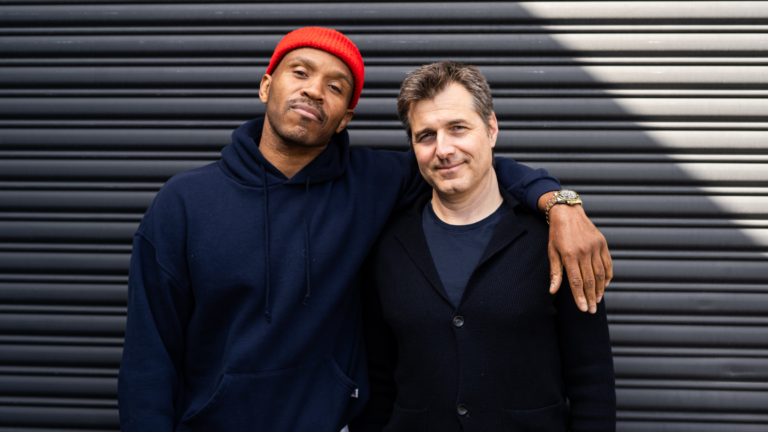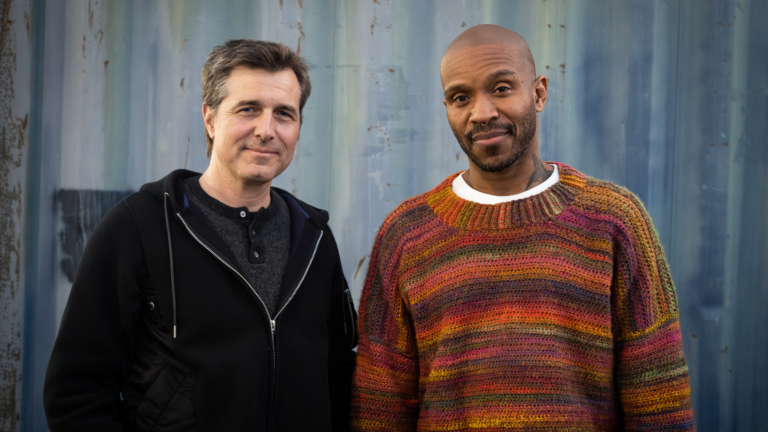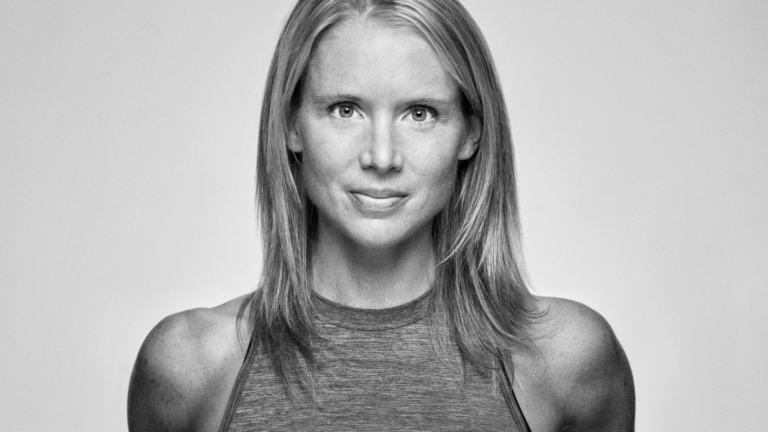This week’s conversation is with Dr. Rachel Zoffness, a medical educator and disruptor who is revolutionizing the way we understand and treat pain.
By trade, Rachel is a trained pain psychologist, a Visiting Professor at Stanford, an Assistant Clinical Professor at the UCSF School of Medicine, and a consultant on the development of integrative pain programs around the world.
She is also the author of The Pain Management Workbook, which merges pain neuroscience with psychology – brain with body, physical with emotional – to get to the heart of true pain management.
If you or someone close to you lives with any kind of pain or discomfort – which I’m guessing is true for many of us – I think you’re going to find incredible value from Rachel. All of us will experience pain at some point in our lives… it’s part of the human condition. But thanks to Rachel, knowing where that pain comes from – and how to better manage it – no longer has to be a mystery.
“The problem with pain and the way we talk about pain is: either your pain is physical and you see a physician or your pain is emotional and you see a therapist. What neuroscience tells us is that it’s never either physical or emotional. It’s always both.”
In This Episode:
Why did she choose to study pain?
As an undergrad at Brown, I studied the science of pain with a wonderful pain researcher who’s no longer with us. I ended up doing my honors thesis on the gate control and neuromatrix theories of pain. I ended up getting master’s at Columbia and a PhD at UCSD in clinical psychology, but I always really wanted to live at this intersection of neuroscience and medicine and clinical work and education and science writing, and I get to do that now and I feel very fortunate. But I also was a child who had chronic pain in various forms. And as an adult, I’ve had an episode of chronic pain that lasted about 10 years. But that aside, pain is one of the most ubiquitous human phenomena. It is so phenomenally interesting. None of us are going to escape it. And I love communicating the science of how pain works because we’ve all been fed a lie for so many years. So I just have gone further and further down this rabbit hole.
Acute pain vs. chronic pain
Pain is this important danger message that teaches us something, like you put your hand on a hot stove. You learn not to do that. That’s an important message. However, what we know about chronic pain is that the brain has become confused and hypersensitive over time, sort of there’s this analogous, much like a trauma response, where you have hypervigilance and you’re extra vigilant of your surroundings. That’s what happens when the brain has chronic pain. So with chronic pain conditions, I have seen an experience that you can reduce pain and I am all about it, and I do not think the amount of suffering that humans endure with chronic pain needs to continue. And I think there’s this narrative in medicine that there’s only one way to treat chronic pain and it’s with pills and procedures, and that’s a big lie. And I don’t think people need to live with pain, and I don’t think people need to be exclusively reliant on medication for pain.
Pain is always physical and emotional
Pain is always both physical and emotional. 100% of the time. And that’s the question I get asked most as a pain psychologist, and maybe we’ll talk about what that means and what that is because no one’s ever heard of that before. Why would you go to a psychologist for a physical problem? And what I want to share with everybody is that pain is never a purely physical problem. It’s always both physical and emotional. So when people ask me, “Oh, you’re a pain psychologist. Do you treat physical pain or emotional pain?” Now I just nod my head and I say, “Yes,” because if you want to treat your bad back and your bad knee, it turns out, science says, if you’re not treating anxiety and depression and untreated trauma and all the things that are going on in your life, in your toxic interpersonal relationships and environmental stressors, like a pandemic, you’re not actually treating pain.
Emotions live in your body, too
Emotions are somatic by definition, and what that means is, emotions don’t just live in your head. They also come out in your body. So if you are anxious and… Anyone who’s ever been anxious knows that your hands will get sweaty and your mouth will get dry and your heart will race or you’ll get butterflies in your stomach, and those are the… That’s the somatic component of emotions. That’s true. So some people with anxiety or who have ever experienced a normal amount of stress or just anxiety or fear before giving a presentation will say, “I’ll get a stomachache. I’ll get nauseous. I’ll get pukey. I’ll get the runs or cramps,” or whatever, and that is healthy and normal. That is normal. Emotions are somatic by definition. For some reason, we pathologize that and we give it all sorts of names, but it is normal for emotions to manifest physiologically.
The brain-body connection
There’s just no denying that the things you think in your head affect your body 100% of the time. So no, there is no such thing as anxiety that’s purely cognitive. That’s what science says. There’s no such thing. All the things are connected. The brain is connected to the body 100% of the time. So my job, when I think about treating pain and helping people who are dealing with emotional and mental health issues also, is connecting the two. Your brain is connected to your body 100% of the time.
The pain dial
You have something that I’m going to call a pain dial, and there’s lots of things that adjust pain volume. So it operates much like the volume in your car, like on your car stereo. You can turn pain volume up and you can turn pain volume down. So, many things adjust pain volume. Stress and anxiety is one, and mood and emotions is another, and attention or what you’re focusing on is a third. All play a role.
You can also turn the pain dial down
When you are relaxed and calm, your muscles, your body are relaxed and your thoughts are calm, your brain sends a message to your pain dial lowering pain volume. So pain feels less bad when you are relaxed, which is why a lot of pain management treatments, at least the good ones, focus on things like relaxation and mindfulness, even though it sounds ridiculous. And it’s also why muscle relaxants, by the way, are prescribed and effective for pain. Thing two is mood. So we know science says, when emotions are positive, we’re feeling happy and joyful and engaged in pleasurable activities, our brain, our limbic system, will lower pain volume. So pain feels less bad when we are happy and joyful and engaged in our lives. And thing three is attention. So when we are distracted, when we’re outside going for a walk or we’re with friends or we’re engaged in a pleasurable activity, our prefrontal cortex lowers pain volume.
Pain is biopsychosocial
If we’re looking at pain as a biomedical problem, we’re just looking at anatomy and physiology, but what science tells us is that pain is a biopsychosocial phenomenon, and what that means is, yes, of course, there’s biological components to pain. There’s tissue damage and system dysfunction. Diet and sleep and exercise matter. Inflammation matters. But that’s only one-third of the pain problem. And if we’re only looking at biological components of pain, we are quite literally missing two-thirds of the pain problem… There’s also psychological components… we have thoughts, we have emotions, we have memories of past pain experiences, we have coping behaviors, whether you’re staying inside and in bed for a year, or whether you’re moving your body, you’re seeking help, you’re using all these relaxation strategies, how are you coping with your pain. There’s so many things in there that we need to target if we actually want people to get well. And then we have the social or the sociological domain of pain, and that’s really everything else. It’s socioeconomic status and access to care and race and ethnicity and your relationships, your family relationships, and whether or not you have social support or you’re isolated, and it’s your larger context and environment. So pain lives in the middle of those three domains, bio, psych, and social, all the time.
Pain is a ubiquitous human experience
Not a single person is going to escape without experiencing pain at some point, whether it’s living in an aging body or the pain of childbirth. It’s part of being human, which is actually why I liked your question at the beginning. You can’t take pain away. Of course, you can’t. But there’s ways of navigating this that can help people suffer less. And if we can do that as healthcare providers, isn’t that our job? Isn’t that our goal?
Placebo can affect pain, but so can nocebo
Nocebo is the opposite of a placebo. It’s when someone gives you a message or gives you a thing and you get worse. I had a patient, a child, with chronic migraine, and his neurologist said to him, “Oh, your mom has chronic migraine. You’re going to have these for the rest of your life.” Now, given what we know about pain science, nocebos quite literally amplify the brain’s danger alarm. Pain is the body’s danger detection system. If you give someone a danger message, you are going to amplify the danger alarm. If you give someone a safety message, you’re going to lower the pain alarm.
Training our medical providers to understand pain
Here’s a fun statistic for you. I wish we were both drinking bourbon. It would make this go down easier. 96% of medical schools in the United States and Canada have zero, zero, dedicated, compulsory pain education, which is why we continue to throw pills at pain despite the fact that we know that that is not the treatment for chronic pain. It’s not the treatment. Yes, medication for acute pain, and of course you can feed medications into chronic pain treatment, but that’s not the sole treatment ever and it’s not a magic fix.
The social component of pain
If a child falls on the playground and the parent has a “oh my God” panic response, research shows, the first thing a child does when they fall is they look at a parent’s face. If a parent panics and is very stressed and anxious, the child will cry. If a parent calmly says, “Oh honey, you’re okay. I’m going to kiss your boo-boo and let’s go back to playing,” the child will not cry. There is always, research shows, a social component to pain.
Pain takes away power
That’s just what it does. It takes away your sense of power over your body and over your life. And I think it’s really important to tell people all this information, because when you teach people about the pain dial, what you’re actually doing is giving them their power back. You’re saying, there’s a lot of things you can do to change your pain. We can target your cognitions about your pain in your body. “I’m broken. I’ll never get better.” We can target emotions. We can target coping behaviors. We can stay in bed because it hurts, and understandably. I did that for a year at the beginning of my chronic pain journey, or we can go back to our lives once we understand the science of pain and learn that just because it hurts, it doesn’t necessarily mean your body is in danger.
What to target when healing pain
No one explains how pain works to us either, so of course we want the experts to tell us how to heal. And I think that’s the purpose today, is to say there are many ways to heal. Targeting the bio alone is not sufficient. It’s a biopsychosocial problem that requires a biopsychosocial solution. So we want to target cognitions. We want to target emotions. We want to target behaviors. We want to target social relationships.
First step – understanding pain
People come to my office and they have been to, on average, 14 different specialists. On average, 14. So 14 doctors, 14, and they’ve been on 40 medications on average. It’s just unreal. There is a solution for chronic pain. It is absolutely treatable, and part of it is understanding how pain works, because you cannot treat something you do not understand… The treatments we have for pain are not actually treatments for pain. Opioids are great for short-term acute pain. They are not a treatment for long-term chronic pain. Research shows they sensitize the brain over time. That’s what they do. So step one, if you have chronic pain and you want to get better, step one is always learning how pain works, because you can only treat something if you understand it first.
The difference between harm and hurt
You can have hurt or pain in the absence of harm or damage to your body, like a nail to the boot, but not the foot. And you can have very little pain and even no pain in the presence of damage to the body, like a four-inch nail to the face. And we all know that’s true. For example, if you’ve ever taken a shower and you found black and blue marks on your body, that is evidence of damage to your body without the accompanying pain, or if you’ve ever played a really great soccer game or football game, and at the end of the game, you’re covered in blood and you have no idea how it got there, danger and damage to the body without the hurt. Hurt and harm are not the same.
The pain recipe
So you know that if you want to make a good omelet, that requires certain ingredients cooked in a certain order. Right? You have to put them in the pan in a certain order for a certain amount of time. And there’s a recipe for getting a good omelet. And the same is true for pain. So just as there’s a recipe for high pain, there is also a recipe for low pain. Now, a pain recipe is always a biopsychosocial thing. What do I mean by that stupid word that I keep using? There’s biological components to pain, of course there are always, including tissue damage, inflammation, sleep, diet, exercise, movement, all those things. There’s also cognitive components to pain, emotional components to pain, coping, social behaviors, social support.


